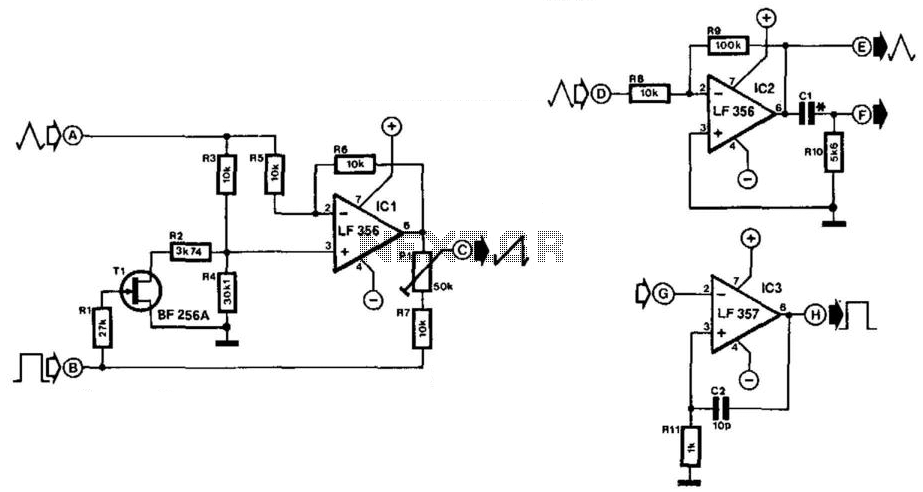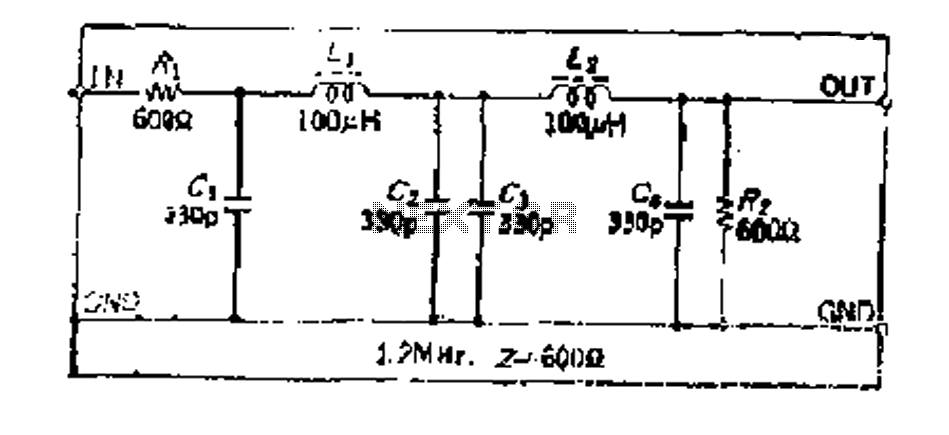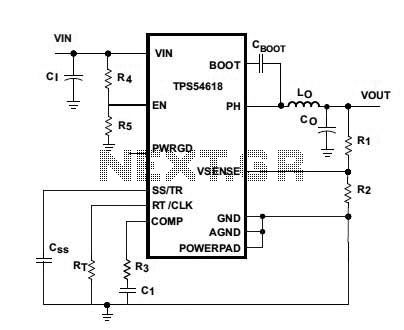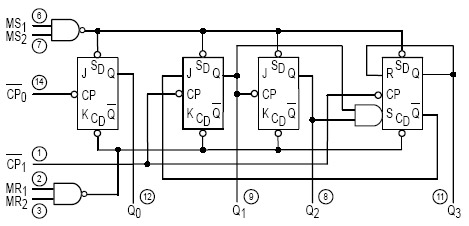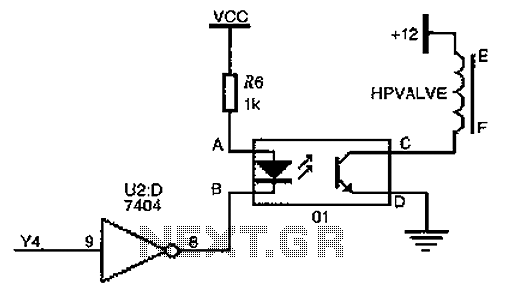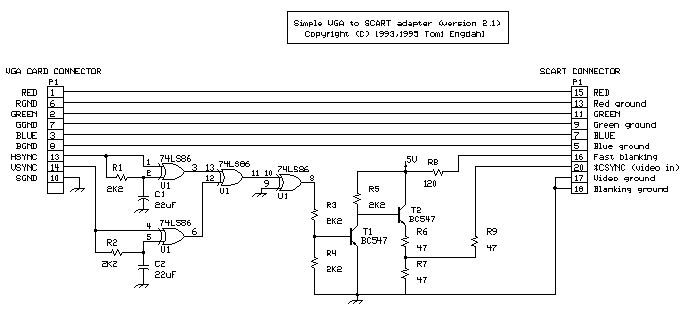
AD8225 High Resolution Analog/Digital Converter (ADC)Circuit and Datasheet
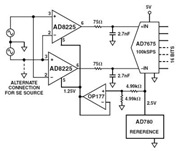
The Common Mode Rejection Ratio (CMRR) facilitates the rejection of high-frequency common-mode voltages, leading to the attenuation of elevated ambient noise levels from utility lines, industrial machinery, and other sources of radiation. The circuit diagram presented illustrates the advantages of the AD8225 in driving a high-resolution Analog-to-Digital Converter (ADC). According to the datasheet, the AD8225 can be configured to drive an ADC with differential inputs, utilizing either single-ended or differential inputs. The circuit diagram details the connections for the differential input, which can be set up by grounding the negative input terminal. This differential ADC circuit employs a pair of AD8225s. Additional information regarding the operation of the AD7675 in this configuration, as well as the reference input of the AD8225, can be found in the corresponding datasheet. The AD8225 Precision Gain of 5 Instrumentation Amplifiers is suitable for applications including EKG and other low-level biomedical amplifiers, current transmitters, multiplexed systems, bridge transducers, sensor signal conditioning, and 4 to 20 mA converters.
The circuit utilizing the AD8225 instrumentation amplifier is designed to enhance the performance of high-resolution ADCs by minimizing the impact of common-mode noise. The CMRR is a critical parameter in this context, as it determines the amplifier's ability to reject unwanted signals that are present simultaneously on both the positive and negative inputs. This characteristic is particularly valuable in environments where electrical noise is prevalent, such as in industrial settings or near high-voltage lines.
In the configuration of the AD8225, the differential inputs allow for improved signal fidelity by amplifying the difference between the two inputs while rejecting any signals that are common to both. When the negative input terminal is connected to ground, the circuit effectively transforms the setup into a single-ended configuration, simplifying the design while maintaining the benefits of differential signal processing.
The AD8225's precision gain of 5 makes it suitable for a variety of applications that require accurate signal amplification. In biomedical applications, for example, the amplifier can effectively process low-level signals from EKG machines, ensuring that critical data is captured without distortion from ambient noise. Additionally, in industrial applications, the AD8225 can be used in current transmitters and sensor signal conditioning, where precise measurements are vital for system performance.
The integration with the AD7675 ADC further enhances the circuit's capabilities, allowing for high-resolution data conversion. The reference input of the AD8225 can be configured to optimize performance, ensuring that the output signal is aligned with the requirements of the ADC for accurate digital representation of the analog signal.
Overall, the combination of the AD8225 instrumentation amplifier and the AD7675 ADC provides a robust solution for applications requiring high precision and noise immunity, making it a preferred choice for engineers designing systems in challenging electrical environments.Rejection Ratio (CMRR) which enables rejection of high frequency common-mode voltage. This will result in the rejection of higher ambient levels of noise from utility lines, industrial equipment, and other radiating sources. The following circuit diagram shows the advantages of AD8225 in driving ahigh resolution Analog/Digital converter (ADC).
Acc ording to the datasheet, AD8225s can be configured todrive an ADCwith differential inputs by using either single-ended or differential inputs to the AD8225s. The circuit diagram perform connections for the differential input that may be configured by connecting the negative input terminal to ground.
This Differential ADC circuit using a pair of AD8225s. You can see more information regarding the function of the AD7675 in this circuit, or using the reference input of AD8225 in the following datasheet. The AD8225 Precision Gain of 5 Instrumentation Amplifiersare used to be applied in applications such as EKG and other low level biomedical amplifiers, Current Transmitters, Multiplexed Systems, Bridge Transducers, Sensor Signal Conditioning and 4 to 20 mA Converters.
🔗 External reference
The circuit utilizing the AD8225 instrumentation amplifier is designed to enhance the performance of high-resolution ADCs by minimizing the impact of common-mode noise. The CMRR is a critical parameter in this context, as it determines the amplifier's ability to reject unwanted signals that are present simultaneously on both the positive and negative inputs. This characteristic is particularly valuable in environments where electrical noise is prevalent, such as in industrial settings or near high-voltage lines.
In the configuration of the AD8225, the differential inputs allow for improved signal fidelity by amplifying the difference between the two inputs while rejecting any signals that are common to both. When the negative input terminal is connected to ground, the circuit effectively transforms the setup into a single-ended configuration, simplifying the design while maintaining the benefits of differential signal processing.
The AD8225's precision gain of 5 makes it suitable for a variety of applications that require accurate signal amplification. In biomedical applications, for example, the amplifier can effectively process low-level signals from EKG machines, ensuring that critical data is captured without distortion from ambient noise. Additionally, in industrial applications, the AD8225 can be used in current transmitters and sensor signal conditioning, where precise measurements are vital for system performance.
The integration with the AD7675 ADC further enhances the circuit's capabilities, allowing for high-resolution data conversion. The reference input of the AD8225 can be configured to optimize performance, ensuring that the output signal is aligned with the requirements of the ADC for accurate digital representation of the analog signal.
Overall, the combination of the AD8225 instrumentation amplifier and the AD7675 ADC provides a robust solution for applications requiring high precision and noise immunity, making it a preferred choice for engineers designing systems in challenging electrical environments.Rejection Ratio (CMRR) which enables rejection of high frequency common-mode voltage. This will result in the rejection of higher ambient levels of noise from utility lines, industrial equipment, and other radiating sources. The following circuit diagram shows the advantages of AD8225 in driving ahigh resolution Analog/Digital converter (ADC).
Acc ording to the datasheet, AD8225s can be configured todrive an ADCwith differential inputs by using either single-ended or differential inputs to the AD8225s. The circuit diagram perform connections for the differential input that may be configured by connecting the negative input terminal to ground.
This Differential ADC circuit using a pair of AD8225s. You can see more information regarding the function of the AD7675 in this circuit, or using the reference input of AD8225 in the following datasheet. The AD8225 Precision Gain of 5 Instrumentation Amplifiersare used to be applied in applications such as EKG and other low level biomedical amplifiers, Current Transmitters, Multiplexed Systems, Bridge Transducers, Sensor Signal Conditioning and 4 to 20 mA Converters.
🔗 External reference
